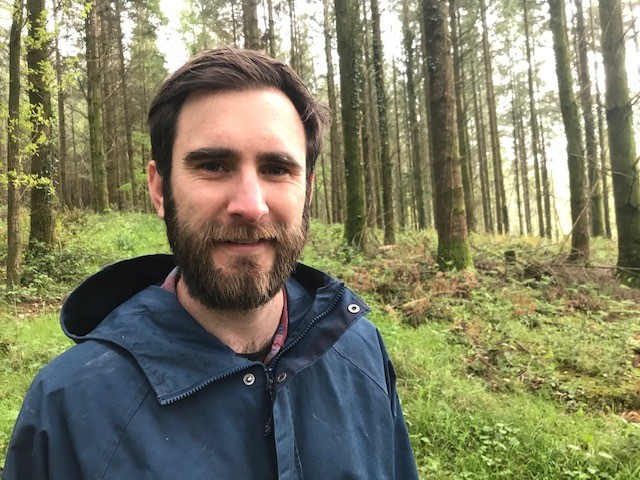June 2021
The extensive use of Artificial Lighting at Night (ALAN) creates an ever-increasing threat to wildlife. Light pollution has increased so much from residences, public infrastructure, and industrial activity, that 80% of the world population live under skyglow and nearly every European cannot experience a natural night sky.
Invertebrates can be especially affected by ALAN, including their feeding, migration and dispersal, predator avoidance and reproduction. These impacts can potentially have sustained consequences on insect diversity and the ecosystem services that they provide. Globally 64% of invertebrates live partially or wholly at night, and they face a particularly great threat from light pollution.
Lighting is needed in many instances for road and pedestrian safety, but excessive light pollution can, and should, be reduced. National light pollution metrics and targets are the key to changing direction.
Studies from Germany suggest that a third of insects attracted to fixed light sources will die.
A recent review, has brought together research on the impacts ALAN can have on insect conservation.
There is growing concern about the disruption on vital behaviours of nocturnally active insects. Reproduction in moths, for example, is closely linked to the natural light cycle and there is clear evidence that ALAN can impact reproduction.
These findings reinforce the urgency required to address light pollution as one of the factors in the insect decline crisis.
The Milky Way is no longer visible to 60% of Europeans
It is not just invertebrates that are affected by ALAN. There are wide-ranging impacts, include interrupting human sleep patterns, altering bird migrations, blocking views of the night sky, and disrupting natural daily and seasonal light cycles of plants. The ecology of lakes and rivers can be dramatically altered for all their inhabitants when nocturnal invertebrate activity is suppressed by light.
Pollination – The night shift
Bees, butterflies, and hoverflies are well known pollinators of the daytime, but what about those that take on the night shift? Moths, beetles, and even some bees pollinate at night and often reach a more diverse set of flowers and crops than their daytime counterparts. ALAN can reduce the nocturnal visits to plants by 62% compared to areas free from ALAN. We must consider how we can help these nocturnal species to thrive, rather than disregarding them just because we rarely see them.
The right light, in the right place, for the right time
Luckily, we can limit the negative impacts of ALAN while ensuring we can safely go about our night-time activities. Unlike other forms of pollution, the impact does not remain once lights are turned off. This creates an immediate simple solution for reducing light pollution, by turning off unnecessary lights when they are not needed. Limiting the length of time lights stay on can be readily achieved through technologies such as timers and motion sensors.
Lighting is of course an important part of night-time safety. In cases where lighting must be used, there are methods to reduce the impact lights may have on the wider environment while simultaneously lighting our way – by using the right bulb, in the right place, for the right amount of time.
Wavelengths emitted by different bulbs can affect species in different ways. By eliminating the most damaging short wavelengths (blues and ultra-violet) we can minimise the impact on wildlife and still provide light for humans.
Directing light upwards, over water bodies and onto vegetation serves little purpose and wastes energy. We have all seen warehouses and sports pitches that project dazzling light across the countryside. Better angling of light or installing shields to lights can illuminate only the necessary areas and limit light pollution.
Correct installation can reduce the effects of light pollution. Planners and lighting engineers must consider light pollution when reviewing lighting infrastructure and guidance must be included with all lighting products available to the public.
To reduce the environmental impact of lighting while increasing public safety, councils, businesses, organisations, and the public must work together to implement solutions. Well designed, considered, and planned lighting can deliver multiple benefits. More information on the range of impacts from and solutions to light pollution can be found in our 2011 light pollution report.
National targets
Based on its evidenced disruption to the natural world light pollution should be treated with the same disdain with which we treat all other forms of pollution.
Measuring light pollution is simple to do, satellite images can be used to establish light pollution levels and CPRE has developed a nine-band classification system. However, the UK does not yet report on light pollution levels.
In England, the Environment Bill is the opportunity for the Government to set out plans to reduce light pollution, its impact on the environment and its effect on people’s ability to enjoy the natural world. However, to date, our proposal for a light pollution target has been ignored, while ALAN and nocturnal biodiversity has been missing from the debate.
A statutory national target to reduce light should be set and would provide multiple benefits, not only in reducing the impact of artificial light on nature and people but also in lowering financial costs and greenhouse emissions. An amendment to secure such a target has been tabled and we hope that Defra Ministers rise to the challenge.
We can address ALAN, but a national target is needed to drive real action. Changes to policy and practice would vastly reduce the negative impacts of artificial light and help to protect nature’s night shift.
David Smith is Social Change and Advocacy Officer at Buglife.
Follow @Buzz_dont_tweet
The opinions expressed in this blog are the author's and not necessarily those of the wider Link membership.




Latest Blog Posts